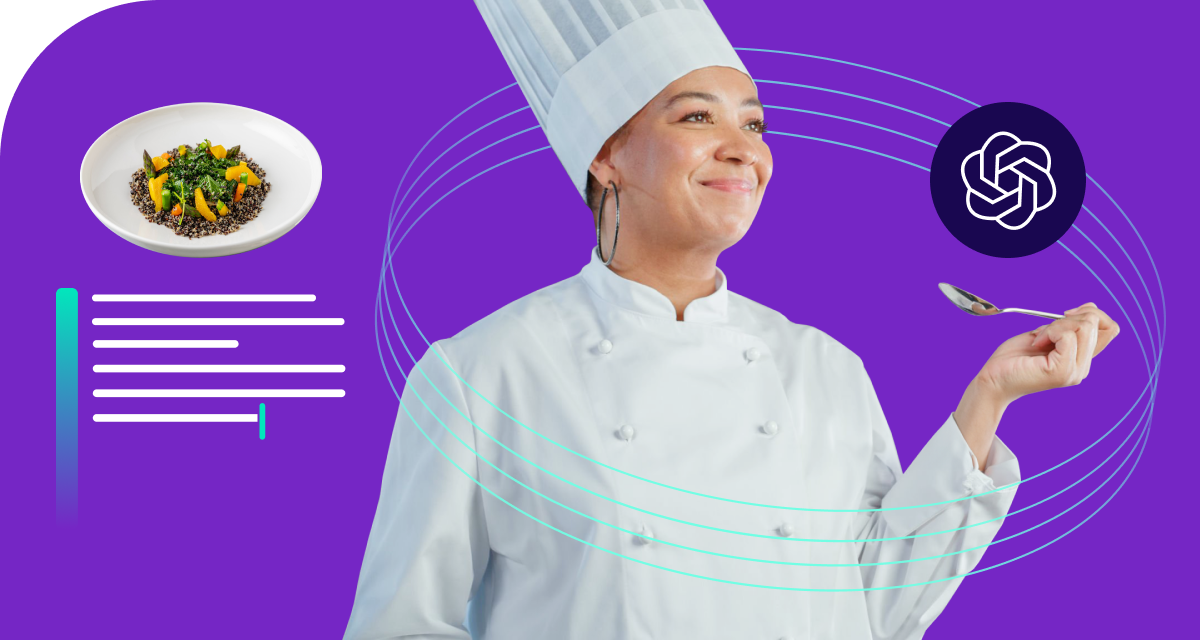AI-powered recipe development: Cracking the consumer code

In an era of fast moving consumer preferences, incumbents in the food and beverage industry find themselves amidst a culinary race of sorts. The stakes are higher than ever to innovate or risk becoming obsolete. With the modern consumer’s cravings for novelty, personalization, and products that align with their evolving lifestyles and values, the industry on the whole seems to be struggling to keep.
AI-powered recipe development is emerging as a potent weapon in this quest, promising to decode the mysteries of consumer preferences to unlock the recipes of tomorrow. In this article, we’ll look at our AI is helping food and beverage companies design products that resonate with the consumer of tomorrow.
The old playbook won’t cut it
Traditional methods of recipe development like taste panels, consumer surveys, and market research, come with well known limitations. Lagging insights, reflecting on trends as they pass maturity and overall costs are incompatible in today’s fast-moving, consumer driven landscape. A new flavor combination that takes months to perfect could be old news by the time it hits shelves.
What’s more, consumer preferences are becoming even more fragmented and nuanced. Universal appeal of the classic cola, for example, is yielding to a mosaic of personalized customer demands. Less sugar, more functional ingredients, exotic flavors, and alignment with specific dietary needs are only some of the consumer needs F&B companies must consider before going to market.
AI-powered recipe development enters the kitchen
While traditional models are proving ineffective in capturing the hearts and wallets of consumers, AI-powered recipe development is disrupting the food and beverage playbook. By harnessing the power of vast datasets, machine learning (ML) algorithms, and flavor prediction models, AI systems are painting a far more detailed, dynamic, and predictive picture of consumer desires.
This isn’t about robots wielding whisks and tasting spoons; it fundamentally alters how companies approach flavor innovation through the use of data-fueled artificial intelligence. Imagine an AI platform capable of ingesting massive amounts of data:
Social media chatter: Millions of social media posts reveal what people are craving, buzzing about, and finding underwhelming in the food and beverage space. Sentiment analysis can pinpoint undercurrents of dissatisfaction, unfulfilled needs, and the beginnings of micro-trends.
Industry knowledge: AI is only as good as the information it is provided. This means that by providing industry-specific data, AI can be tailored to excel in vastly different fields. For F&B companies this means AI can analyze consumer data to suggest innovative recipes that cater to market demand.
Purchase patterns and demographics: Sales data overlaid with demographic information can paint an even more detailed picture of who is buying what and why. AI can spot micro-segments driven by specific dietary preferences, age groups, or lifestyle choices.
With such a rich tapestry of data at its disposal, AI can accomplish astounding feats in the realm of product personalization. Advanced algorithms can analyze vast amounts of data on flavor profiles, trending ingredients, and dietary needs, leading to the development of innovative products with unprecedented accuracy.
AI-powered recipe development makes people more purposeful
This, in turn, frees up food scientists and product developers from time-consuming data analyses, allowing them to focus on creative experimentation and delivering truly unique offerings that delight customers. Here’s how AI and humans are working together to place the modern consumer at the forefront of product innovation.
Early trend identification: Instead of playing catch-up, AI can spot nascent trends before they break, allowing companies to capitalize on first-mover advantage.
Predictive flavor modeling: AI can analyze historical data to predict which novel flavor combinations have the greatest potential to resonate with specific consumer segments. It can even simulate the taste experience before a single ingredient is mixed.
Optimization on the fly: AI-driven feedback loops can track how a new product performs in real-time. Algorithms can continuously tweak formulations based on sales figures and social media responses.
The AI-Human Collaboration
While AI is a powerful tool, it is essential to recognize that human creativity and taste remain indispensable in the recipe development process. AI can generate a range of options and predict consumer preferences, but it can’t capture the magic of serendipity or the emotional connection that a perfectly crafted dish can evoke.
The future of recipe development lies in the harmonious collaboration between AI and human chefs. By leveraging their respective strengths, they can create culinary experiences that are both delicious and in tune with evolving consumer demands.
As we look ahead, it’s clear that the food and beverage industry is poised for a revolution. AI-powered recipe development will be at the forefront of this transformation, ushering in a new era of personalized, sustainable, and trendsetting products that captivate the hearts and palates of consumers worldwide.

